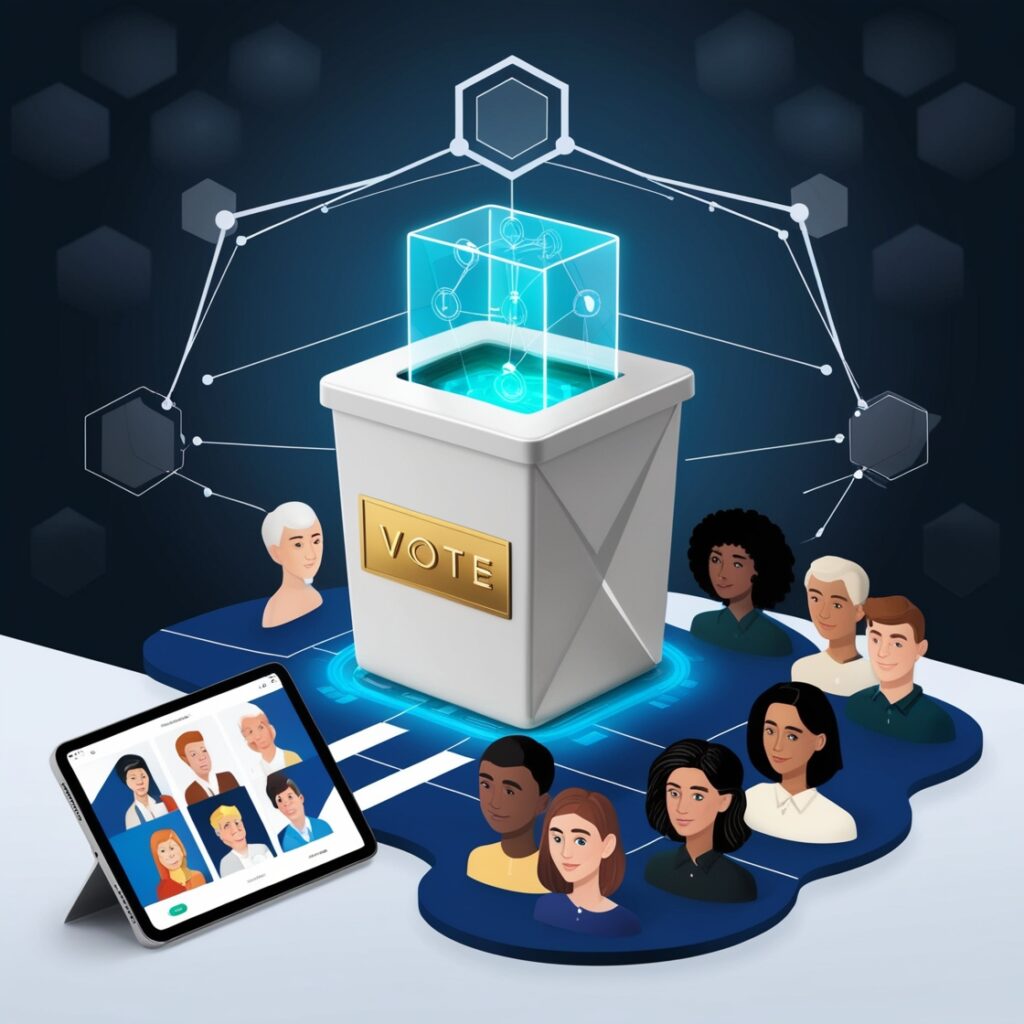The concept of decentralized voting is transforming the way elections and decision-making processes are conducted. With blockchain technology, building a secure, transparent, and tamper-proof voting system has become a reality. This guide will explore how you can create a decentralized voting system with blockchain to revolutionize electoral processes and enhance trust.
Why Use Blockchain for Voting?
Blockchain technology offers several advantages that make it ideal for voting systems:
1. Security: Cryptographic techniques prevent unauthorized access and tampering.
2. Transparency: Every transaction is recorded on a public ledger for accountability.
3. Immutability: Once a vote is recorded, it cannot be altered.
4. Decentralization: Eliminates the need for central authorities, reducing risks of fraud.
5. Accessibility: Allows remote voting, increasing participation rates.
Key Features of a Blockchain-Based Voting System
To build a robust decentralized voting system, consider the following features:
• Voter Authentication: Secure mechanisms to verify voter identity.
• Anonymity: Votes should be cast and counted without compromising voter privacy.
• Auditability: Voting data should be verifiable by participants.
• Real-Time Results: Blockchain enables instant counting and result updates.
• Scalability: The system should support large numbers of voters.
Steps to Build a Decentralized Voting System with Blockchain
1. Choose a Blockchain Platform
Selecting the right blockchain platform is critical. Popular options include:
• Ethereum: Offers smart contracts for building decentralized applications (dApps).
• Hyperledger Fabric: A permissioned blockchain suitable for private voting systems.
• Binance Smart Chain: Provides low-cost transactions for scalable solutions.
• Polygon: Ideal for fast and cost-effective voting applications.
2. Define Voting Parameters
Before development, outline the key parameters of your voting system:
• Eligibility: Define who can vote and set up authentication methods.
• Voting Process: Include nomination, voting, and result declaration stages.
• Duration: Specify the time frame for casting votes.
3. Develop Smart Contracts
Smart contracts are essential for automating the voting process. They ensure:
• Voters can only cast one vote.
• Votes are securely recorded on the blockchain.
• Results are automatically calculated and displayed.
Tools like Remix IDE or Truffle Suite can help you write and deploy smart contracts without requiring advanced coding skills.
4. Integrate a User Interface (UI)
A user-friendly interface is crucial for voter engagement. No-code platforms like Bubble or Webflow can help you design intuitive interfaces where users can:
• Register and verify their identity.
• Cast votes securely.
• View results in real time.
5. Secure Voter Authentication
Authentication ensures only eligible voters participate. Consider integrating:
• Biometric Verification: Fingerprint or facial recognition.
• Cryptographic Keys: Unique private keys for voters.
• Digital IDs: Verify voters using government-issued digital IDs.
6. Test and Launch the System
Before launching, conduct thorough testing:
• Simulate multiple voting scenarios to ensure the system handles edge cases.
• Test for vulnerabilities in the smart contracts.
• Gather user feedback through beta testing.
Once the system is validated, deploy it on the blockchain platform and monitor performance during live elections.
Challenges in Decentralized Voting Systems
1. Scalability Issues:
• Solution: Use scalable blockchains like Polygon or Solana.
2. Resistance to Adoption:
• Solution: Educate stakeholders about the benefits of blockchain-based voting.
3. Cybersecurity Risks:
• Solution: Regularly audit smart contracts and implement robust encryption.
4. Digital Divide:
• Solution: Provide resources and training for voters unfamiliar with blockchain.
Benefits of a Blockchain-Based Voting System
1. Enhanced Trust: Transparency reduces doubts about the integrity of elections.
2. Global Accessibility: Remote voting enables participation from anywhere.
3. Cost Efficiency: Reduces expenses on physical infrastructure and manual processes.
4. Faster Results: Real-time vote counting minimizes delays.
Use Cases of Decentralized Voting Systems
• Political Elections: For local, national, or international elections.
• Corporate Decision-Making: Shareholder and board member voting.
• Community Governance: Decentralized autonomous organizations (DAOs).
• Educational Institutions: Student council and administrative elections.
Future Trends in Blockchain Voting
1. Integration with AI: AI algorithms to analyze voting patterns and detect anomalies.
2. Interoperability: Cross-chain voting systems to support multiple blockchain platforms.
3. Mobile Accessibility: Blockchain voting apps optimized for smartphones.
4. Quantum-Resistant Encryption: Enhanced security against future threats.

Conclusion
Building a decentralized voting system with blockchain is a step toward revolutionizing traditional voting processes. By leveraging the security, transparency, and efficiency of blockchain, you can create a system that fosters trust and inclusivity.
Whether you’re designing a political voting platform or a decision-making tool for organizations, blockchain technology offers the ideal foundation. Start building today and contribute to the future of fair and transparent voting systems!




Thank you for your sharing. I am worried that I lack creative ideas. It is your article that makes me full of hope. Thank you. But, I have a question, can you help me?
Thank you for your sharing. I am worried that I lack creative ideas. It is your article that makes me full of hope. Thank you. But, I have a question, can you help me?
Thanks for sharing. I read many of your blog posts, cool, your blog is very good.
Can you be more specific about the content of your article? After reading it, I still have some doubts. Hope you can help me.
Your point of view caught my eye and was very interesting. Thanks. I have a question for you. https://accounts.binance.com/bn/register-person?ref=UM6SMJM3
Your article helped me a lot, is there any more related content? Thanks!
Thank you for your sharing. I am worried that I lack creative ideas. It is your article that makes me full of hope. Thank you. But, I have a question, can you help me?